When you're looking into insulation, especially for areas like garage doors, walls, floors or other building envelope parts, you'll come across various types of foam insulation. In this article we'll compare three key foam types — Expanded Polystyrene (EPS), Extruded Polystyrene (XPS) and Irradiated Cross-Linked Polyethylene (IXPE) — to help you determine which is best for your project. Although the focus of this site is on the product from The Foam Company (specifically their InsulDoor Garage Door Insulation Kit for garage-door insulation), the lessons here apply more broadly to many insulation applications.
We'll cover:
- a quick introduction to each foam type
- how they compare across performance factors such as thermal resistance (R-value), moisture behaviour, compressive strength, cost and suitability
- special considerations for particular applications like garage doors, walls, floors and low-headroom spaces
- summarised "which to choose when" guidance.
Let's dive in.
Understanding the Foam Insulation Options
What is Expanded Polystyrene (EPS)?
EPS is one of the more familiar rigid-foam insulation materials. It is made from polystyrene beads that are expanded (usually using steam or other blowing agents), moulded or pressed into boards or blocks. Because it uses a bead expansion process, EPS often has tiny interstitial spaces between the beads fused together.
Among its strengths: it is versatile, well-used in walls, roofs, floors, sometimes below grade, and is often cost-effective. However, there are trade-offs: EPS typically has lower R-value per inch compared to the higher-performing foams, and moisture/absorption behaviour (especially in below-grade or damp settings) needs to be checked. You can explore The Foam Company's full range of EPS products here.
What is Extruded Polystyrene (XPS)?
XPS is also a polystyrene-based rigid foam insulation, but it is manufactured differently: the polystyrene is melted and extruded through a die, resulting in a more homogeneous closed-cell material with fewer interstitial voids.
Because of this manufacturing method, XPS tends to have superior moisture resistance in many cases, higher compressive strength and more stable long-term thermal performance.
Typical applications include below-grade walls, slab-edge insulation, areas with load or moisture exposure. But the cost per unit R-value tends to be higher than EPS in many cases. Learn more about The Foam Company's XPS options.
What is IXPE (Irradiated Cross-Linked Polyethylene)?
IXPE is less commonly discussed in a typical building insulation-board context (compared to EPS or XPS) but it is a high-performance closed-cell foam made by cross-linking polyethylene via electron-irradiation (hence "irradiated cross-linked").
It features very fine uniform cells, is lightweight, has excellent moisture resistance and thermal insulation, good chemical and weather resistance, and is used widely in various industries — including automotive, construction, acoustic underlayments and so on. The Foam Company offers IXPE foam rolls as part of their polyethylene foam range.
While not always the first choice for large rigid insulation boards in heavy-construction (depending on cost/availability), it can play a role in high-end or specialist insulating, acoustic or moisture-sensitive applications.
Comparing EPS vs XPS vs IXPE – Performance Factors
Here's a breakdown of how the three compare across key criteria that matter for insulation decisions.
Thermal Resistance (R-value)
- EPS: Typical R-value per inch is lower than the highest performing foams. For example, one source lists EPS at roughly R-3.8 to R-4.5 per inch (depending on density). Learn more about EPS foam density grades and how they impact performance.
- XPS: Wins more on this front among the polystyrene foams, with typical R-value ~R-5.0 per inch for common boards.
- IXPE: Though less commonly quoted in the typical board-insulation format, its closed-cell structure, fine cell size and cross-linking give favourable thermal conductivity numbers. For example, one supplier lists IXPE thermal conductivity ≤ 0.049 W/m·K (for thicker versions) or ≤ 0.040 W/m·K (for higher density) which corresponds to good insulation performance.
In general: if you have limited thickness available and need high R-value in a thin profile, higher performing foams like XPS (or depending on spec IXPE or other specialty foams) will give you more. If thickness is generous and budget is tighter, EPS may suffice.
Moisture and Water Resistance
- EPS: Although it provides insulation, its structure (with micro-voids between beads) means it can absorb water more than XPS in some test scenarios. For instance, one manufacturer indicates EPS may have up to ~2% by volume change when immersed, versus 0.3% for XPS in testing. However real-world performance in many above-grade applications tends to show EPS is still viable.
- XPS: Generally better in moisture resistance. For instance, DuPont notes XPS retains high R-value even after exposure to standing water. This makes XPS more suitable for below-grade, slab-edge or damp situations.
- IXPE: Because of the cross-linked closed-cell structure and fine uniform cells, IXPE offers excellent moisture resistance. One specification sheet indicates water absorption as low as ≤ 0.2 % (in some densities) for 24-hour immersion.
Compressive Strength / Load Bearing
- EPS: Compressive strength tends to vary with density; for heavy loads or traffic areas EPS may need higher densities. Some sources caution against EPS in heavy load zones unless specified.
- XPS: Performs well in load-bearing contexts (e.g., under slabs, trafficked areas) because of its stronger, homogenous closed-cell structure.
- IXPE: While IXPE may not always be quoted in slab-underneath structural heavy loads, its closed-cell polyethylene structure offers good stability; but you'll want to get the correct density/specification for heavy load usage.
Long-Term Stability and Ageing
- EPS: One advantage is that since many EPS formulations use air as the insulating gas (or pentane that diffuses), its long-term thermal drift is less of a concern compared to some foams using other blowing agents.
- XPS: Often maintains its thermal performance well, especially when protected and installed properly. However, if exposed to moisture absorption or if the blowing agent changes, there can be some performance drift.
- IXPE: Because of the cross-linked molecular structure and closed-cell polyurethane/PE combination, IXPE tends to have stable long-term performance, resistance to ageing, UV/ozone, and environmental exposures (depending on installation).
Cost Considerations
- EPS: Often the most cost-effective from a simple material cost per R-value basis in many areas. One source says: "EPS ... typically offers the lowest cost per R-value per inch.
- XPS: Mid-to-higher cost than EPS in many markets, reflecting higher performance. For example one table includes EPS cost per square foot at ~$0.25–$0.30, XPS ~$0.42 for 1-inch board.
- IXPE: Because of its higher performance specialization (cross-linked polyethylene closed-cell) and sometimes more niche usage, the cost may be higher still or require specification-checking. So the value proposition depends on the specific project needs (moisture, acoustic, thickness limitations).
Environmental / Sustainability Considerations
- EPS: Some advantages include relatively simple manufacturing processes, potential for recycled content, and broad usage. But polystyrene itself is petroleum-based, and disposal/recycling can be challenging.
- XPS: Also polystyrene based; historically some XPS used blowing agents with high global warming potential (GWP). Newer formulations are improving.
- IXPE: Because it's polyethylene and cross-linked, the specifics of embodied energy, recyclability, end-of-life must be investigated; some specifications emphasise durability and long service-life (which helps sustainability).
Application to Real-World Use: Which Foam for Which Scenario?
Example: Garage Door Insulation (and similar thin-profile uses)
Let's take the case of the product from The Foam Company: the InsulDoor Garage Door Insulation Kit which is custom-cut insulation for garage doors. In a scenario like this you'll want to consider:
- limited thickness allowance (garage doors have panels, frames, tracks)
- moderate thermal load (garage doors often are lightly insulated spaces, may face outside walls)
- potential for moisture or outdoor air infiltration if the door is external
- cost-sensitivity (garage door insulation is often a retrofit)
Given these constraints:
- EPS could be a very cost-effective option if the thickness allows and moisture exposure is moderate.
- XPS might provide better thermal resistance in thinner profiles and better moisture resistance, so if you want a "premium" insulating job and thickness is limited, XPS could be worth the extra cost.
- IXPE might come into play if you have special needs — for example very tight thickness space, acoustic reduction (garage may house laundry or workshop), high moisture or condensation concerns — but you'd need to check if the product is available, cost-effective in that format, and compatible with the door panel/board manufacturing.
Thus, in the garage-door insulation context: EPS would cover most basic insulation needs; XPS steps up performance; IXPE would be a specialist choice. The Foam Company's kit being custom-cut suggests they've considered fitting constraints — in such cases the choice of more thermally efficient foam may offer better benefit. For more information, read their guide on maximizing energy efficiency with garage door insulation.
Walls, Floors, Below-Grade or Load-Bearing Applications
- For below-grade or slab-edge insulation, or in damp environments, XPS is often a safer choice because of its better moisture resistance and higher compressive strength.
- For walls (above grade) where thickness is less constrained and cost is key, EPS can be adequate — especially if protected by cladding and moisture controls.
- For floors under heavy loads or traffic areas, XPS or other high-strength foams are preferred over lower-density EPS unless the EPS is specified for load.
- If you have acoustic requirements, ultra-thin insulation needs, or premium performance (e.g., high-end retrofit where you cannot add much thickness) then a foam like IXPE might become a viable part of the equation (or you might use other advanced foam types).
- For roof and ceiling insulation applications, consider reading The Foam Company's article on the role of XPS in roof and ceiling insulation.
Thickness Constraints and Retrofit Scenarios
In retrofit projects where you cannot add much thickness to the existing structure, insulation with higher R-value per inch becomes more valuable. XPS or IXPE both have advantages here compared to basic EPS. Also, if you cannot afford intrusion into the room or the frame system, selecting a higher performance foam might reduce the required thickness for the same thermal result.
Moisture and Condensation Risk
If insulation is installed in an environment where condensation or moisture ingress is possible (garage doors facing cold outdoors, slabs near ground, walls with external exposure, etc.), foam that better resists moisture (XPS or IXPE) often delivers better long-term performance. Lower moisture absorption means less risk of thermal degradation, mould/mildew issues, and structural worries.
Budget vs Performance Trade-Off
Often budgets force a trade-off between thicker insulation (with cheaper foam) and thinner insulation (with higher performance foam). If you can afford to add more thickness and you are in a moderate exposure environment, EPS gives cost savings. If you are constrained by thickness, moisture risk or higher performance target, XPS or IXPE may justify the higher cost. For a detailed comparison of these materials, see The Foam Company's article comparing EPS and XPS foam.
Making the Decision: Which Foam Should You Choose?
To help structure the decision-making process, here's a summarised guide.
Choose EPS if:
- You're insulating areas where moisture exposure is moderate or controlled (walls above grade, attic spaces).
- You have enough thickness allowance so that the slightly lower R-value per inch is acceptable.
- Cost is a major consideration and you want to maximise R-value per dollar.
- The environment isn't highly exposed to dampness or heavy loads.
Browse The Foam Company's EPS products to find the right solution for your project.
Choose XPS if:
- You have moisture exposure risk (slab-edge, below grade, garage door facing outdoors) or potential condensation.
- You need higher compressive strength (floor slabs, traffic areas, high load situations).
- You have limited thickness available and want higher thermal performance per inch.
- You can tolerate a higher up-front cost for better long-term stability and performance.
Explore The Foam Company's XPS products for premium insulation solutions.
Choose IXPE (or similar high-performance cross-linked PE foam) if:
- You have specialised requirements (ultra-thin insulation space, high acoustic performance, high moisture resistance, premium retrofit).
- You are willing to invest more for performance and/or longevity.
- You have access to the product in the required board or roll format and compatibility with your installation (door panels, wall panels, etc).
- The performance benefits (e.g., improved comfort, acoustic dampening, better moisture control) justify the extra cost.
View The Foam Company's polyethylene foam products including IXPE options.
Specific Recommendations for The Foam Company's InsulDoor Kit Context
Since you are working (or considering working) with the InsulDoor Garage Door Insulation Kit from The Foam Company, here are some tailored pointers:
- When selecting foam for the garage-door kit, consider the door's exposure: a door facing north (in Australia) or with little shading may face high sun load and thermal fluctuations; moisture ingress via weather seals or gaps is possible. In this case, favouring a foam with moisture resistance and durability (XPS or higher specification EPS) is wise.
- Check thickness available in the door panel. If you can only insert a thin board, you'll benefit from higher R-value per inch foam (XPS or premium foam) rather than thick EPS.
- Consider installation complexity and cost: custom-cut kits simplify fitting and reduce waste, so the material cost difference between foam types may be offset by easier installation or longer life.
- Consider overall benefit vs cost: If your garage door is lightly insulated currently or you just want a modest improvement, a moderate-density EPS might hit the sweet spot. If you're turning a garage into a workshop, home gym, or want climate control, stepping up to XPS is sensible.
- Don't forget air sealing and thermal bridging: whichever foam you choose, the effectiveness depends on proper sealing, fitting, and minimising air leaks around the door panels, frames and joins. Foam insulation is only one part of the system.
- For acoustic benefits (garage adjacent to living space), foam that also offers sound-absorption (such as IXPE or hybrid solutions) could add value beyond just thermal insulation.
Practical Checklist Before You Buy
Here's a quick checklist for your project:
- Measure available thickness space in the door or wall panel.
- Estimate required R-value (based on local climate, orientation, usage of space).
- Check moisture conditions: is the door exposed to weather, condensation, slab edge, ground level?
- Consider load or structural constraints (for floors or slabs).
- Compare cost per board or kit (including install) for each foam type.
- Ask supplier/manufacturer for product data sheet: R-value, water absorption, compressive strength, long-term thermal drift, warranty.
- Ensure proper fit and cut-to-size (The Foam Company's custom cut kit is an advantage).
- Ensure proper air sealing and avoidance of gaps around foam panels.
- Plan for the lifecycle: how long will the foam retain its performance? How easy will it be to replace or upgrade later?
- Consider acoustic, moisture and durability benefits beyond just thermal – especially if space is near living areas or is used for more than just storage.
If you have questions about which foam is right for your project, contact The Foam Company for expert advice.
Summary and Final Thoughts
In the battle of foam insulations — EPS, XPS and IXPE — there is no single "best" choice for all projects. Rather, the right foam depends on your specific needs: budget, performance, thickness constraints, exposure to moisture, and usage of the space.
- If your focus is cost-effectiveness, moderate insulation requirement and you have thickness to spare, EPS is a solid option.
- If you face moisture exposure, limited thickness, high performance requirements or load constraints, XPS is likely the better all-rounder.
- If you have specialised demands (very thin space, need acoustic insulation, premium retrofit, high moisture/condensation control) then a foam such as IXPE may deserve consideration.
In the context of the garage door insulation kit from The Foam Company, the decision hinges on your garage's exposure and use. For a typical residential garage, EPS might suffice; for a workshop, gym, or high-exposure door, stepping up to XPS (or considering premium foam) would deliver better long-term comfort, efficiency and durability.
Ultimately, good insulation is only as good as the full system around it — proper fitting, sealing, installation quality and choosing a material aligned with the environment matter just as much as the material itself.


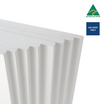
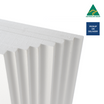


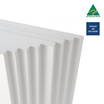


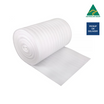
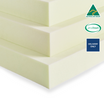
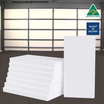
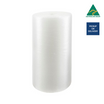



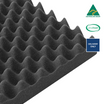
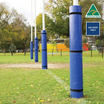
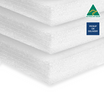

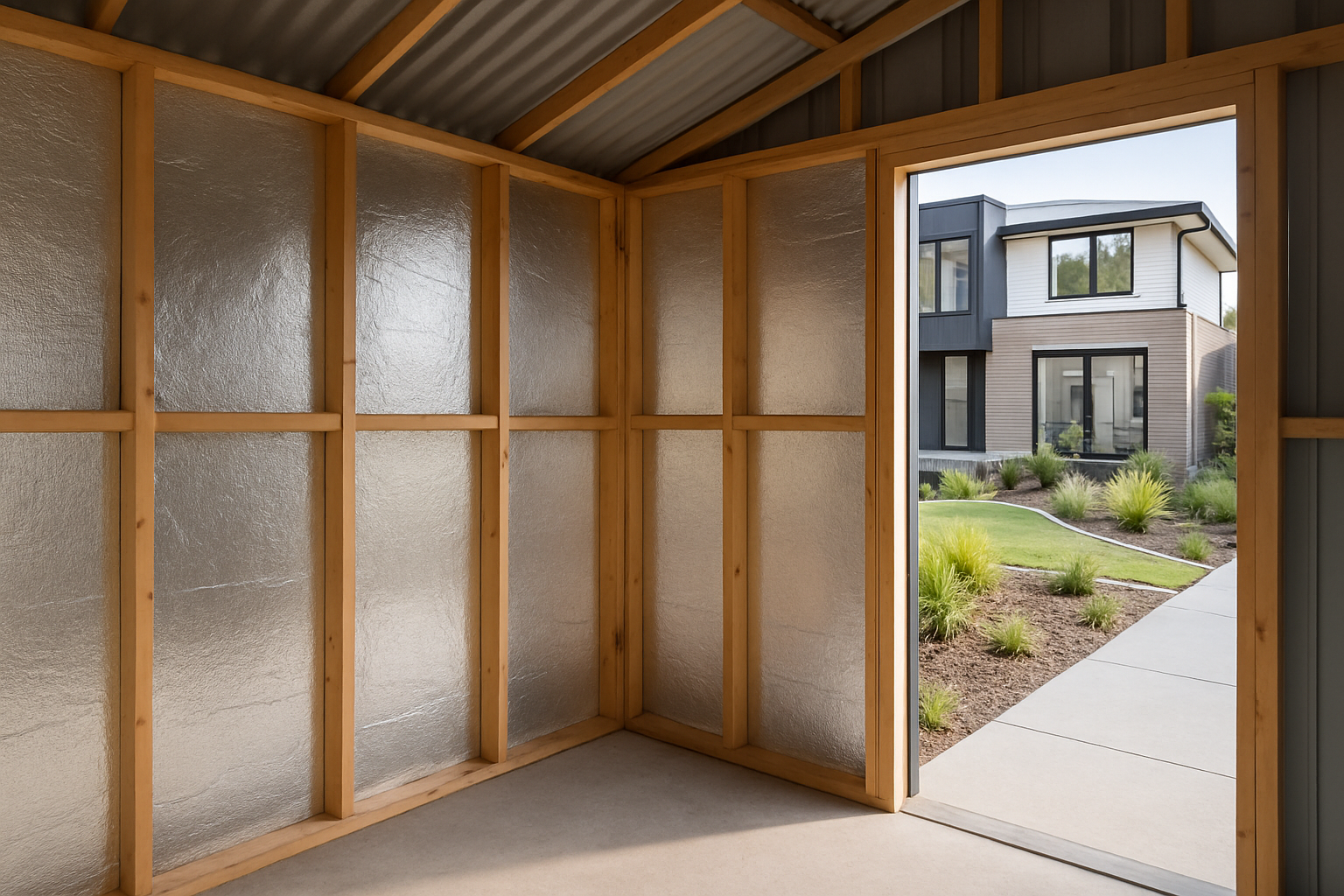
Leave a comment
This site is protected by hCaptcha and the hCaptcha Privacy Policy and Terms of Service apply.